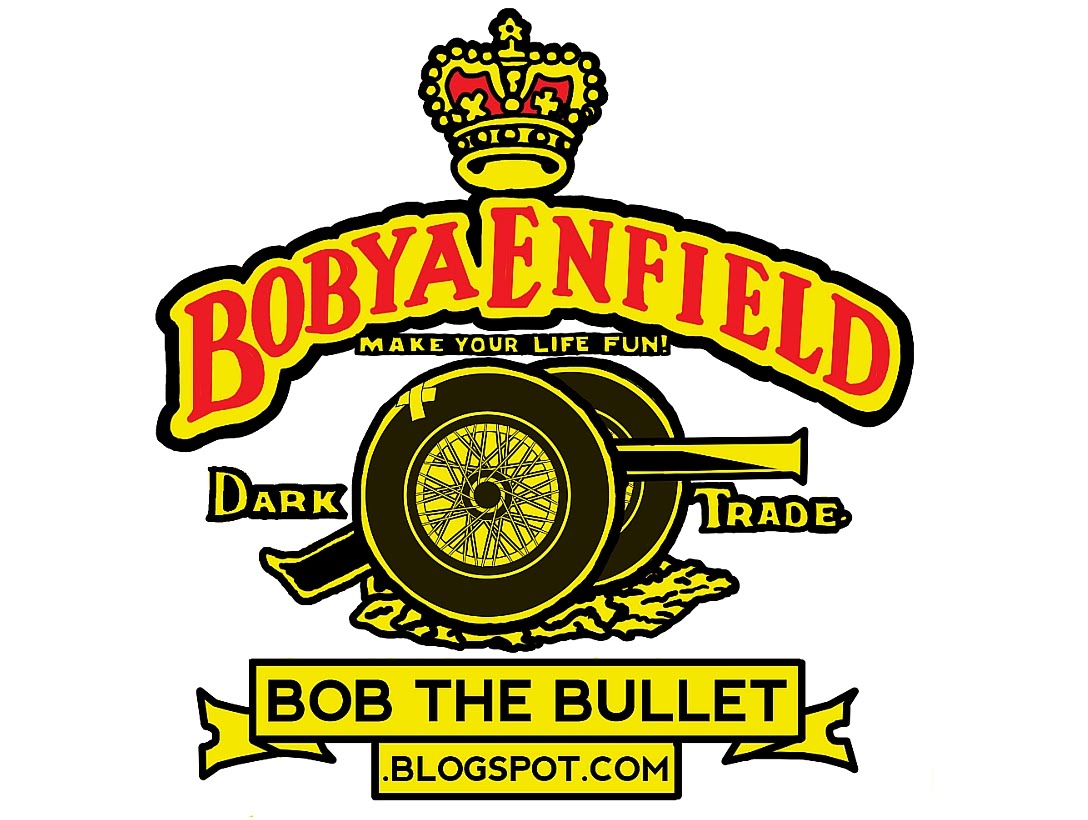Matchbox anyone?
and one for Mr Qmaster
DISCLAIMER

The Hitchcock Rigid Conversion
Mission Statement
I have heard so many horror stories about the Indian made Bullet from people who's mate used to have one, that I have lost count. All I can say is that I have covered over 20,000 miles on mine in the last three and a half years, and feel happy that it is quite capable of doing another 20.
So if you like the idea or just curious, you are welcome to come along for the ride.



nice! how does the front suspension works? yesterday i saw in the internet, david beckham riding a customised byke and having same kind of suspension. i am it must be serving the purpose of suspension.
ReplyDeleteA bit long VJ but this explains it.
ReplyDeleteThe girder is usually designed with a pair of triangulated legs made of equal diameter tubing. The triangulated section forms a truss, which is quite strong. It is hard to fault most girders from the standpoint of strength, but most are affected to a varying degree by adverse handling characteristics.
Even a girder which is geometrically correct [and few are] presents a large amount of unsprung weight, causing handling deficiencies. Granted, some of the solid steel springers contribute as much, or even more to unsprung weight, but at least those springers constructed of tubing do not add much unsprung weight.
Geometry i of utmost importance in girder design. An incorrect design can easily result in zero or negative trail. Under such a condition, high speed wobble becomes a major concern. The geometry of a girder should be carefully checked to be sure that at least three inches of positive trail will result on your bike.
I say your bike because the amount of rake in your steering head will contribute to the resultant trail of a girder. Generally it is safest not to rake your frame if you intend to install a girder.
Girders that are designed with forward swooping legs are even more prone to produce negative trail. The four leading links, connecting the girder to the trees form a pair of parallelograms, if the girder is correctly designed. All four links must be of equal length. Often a manufacturer lacking basic engineering knowledge will produce a girder with extra long bottom links. In this case, parallelograms are not formed by the links and you better believe some horrible handling will result.
In these cases, every time a bump is encountered, the girder will rise in relation to the steering head, causing the bike's wheelbase to increase. After passing the bump, the momentum of the frame, forced to rise in order to relieve the compression of the girder spring, will continue to rise as the girder's relative position lowers. This condition will cause the wheelbase to decrease. Once stabilized, the wheelbase will return to its original length, until the next bump is encountered. Imagine, if you will, what an elastic wheelbase does to the bike's handling.
Of course, the enterprising owner of a girder can shorten the lower links to match the length of the uppers, or build new ones, to correct the obvious handling deficiency. But consider this; if the original manufacturer did now possess such basic knowledge, one can imagine the integrity and craftsmanship in the rest of the girder.
Most girders possess yet another major design flaw. The make use of a single spring. And springs have been known to break, especially improperly chromed springs. If a single spring breaks on a springer the instant shift in rocker loading will cause some discomfort, to be sure, but not to the extent that the bike cannot be brought to a safe stop, under normal conditions. However, if that single spring on a girder snaps, you will probably find yourself in deep trouble.
The girder will instantly allow the frame to drop until it bottoms on the pavement. At the same time, its lack of loading will cause the front wheel to offer essentially no steering control. The hapless rider will be extremely lucky if he doesn't go down.
Alternatives to the single spring include dual spring and spring/shock combinations, both of which are on the market, and in either case the design deficiency offered by the single spring is eliminated.
Although, as stated, the girder is a very strong design, improper welding techniques, poor alignment, inadequate bushings, and undersize tubing can render it substandard.
If proper ratio between the overall length of the girder, and the diameter of its tubing is not maintained, elastic buckling can occur during normal riding. Be sure that the girder of your choice has relatively large diameter tubes in relationship to its length.